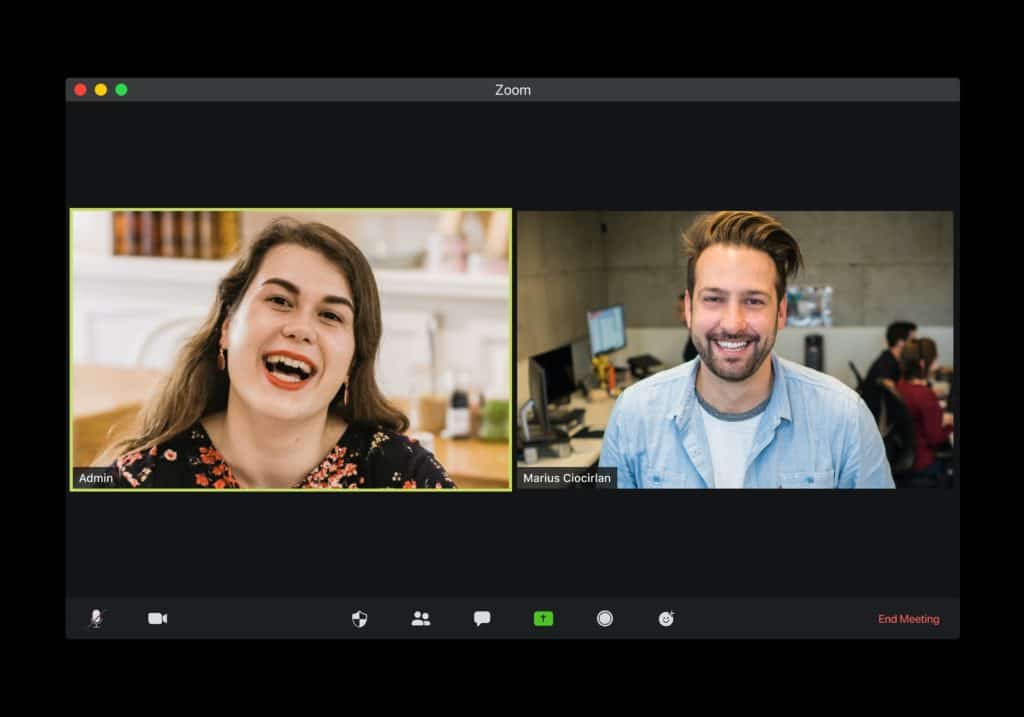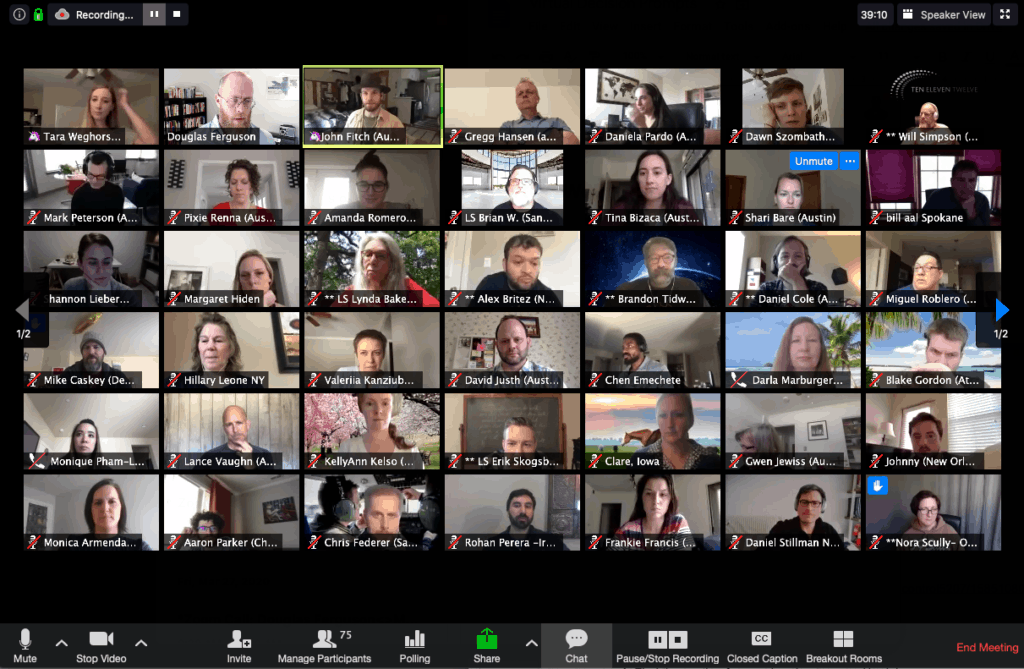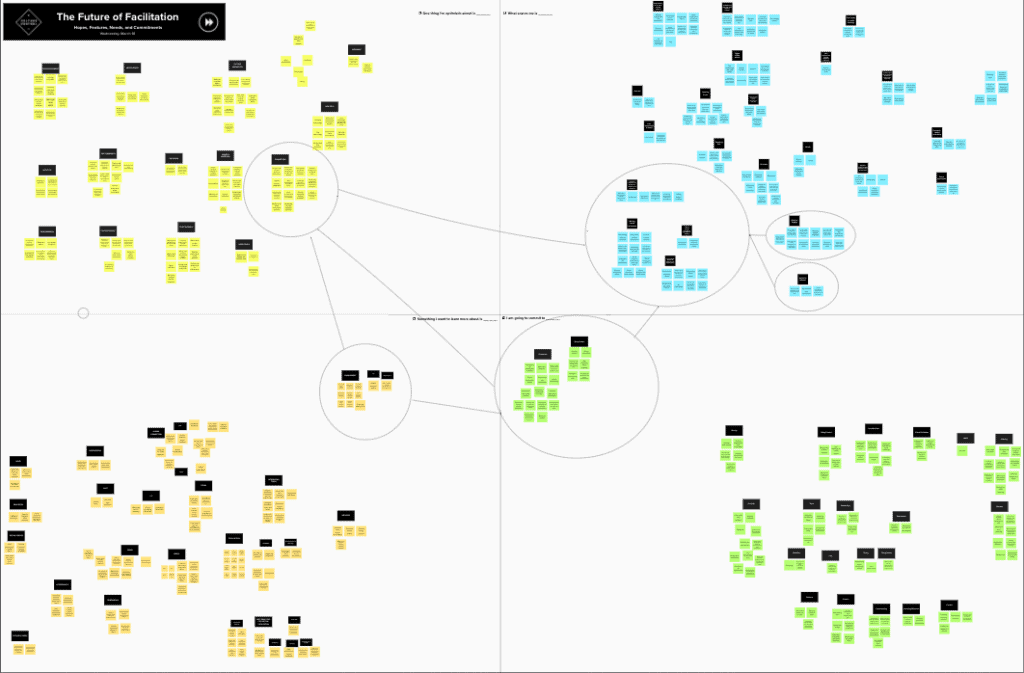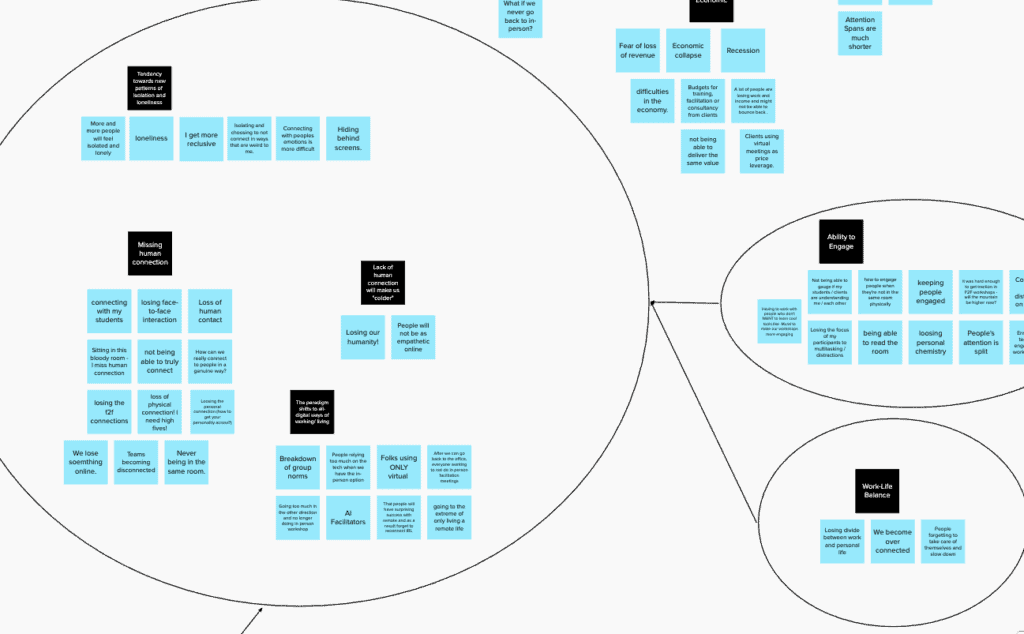How to utilize apps to support remote design thinking workshops
Design thinking is a creative problem-solving process. Its human-centric methods are effective for anyone wanting to generate bold and innovative ideas or creatively tackle problems–from product creators to entrepreneurs to business leaders. Now more than ever, design thinking is necessary to help us ideate solutions and work together to solve problems. That’s why we’ve been hosting free weekly community workshops to bring minds together in a shared space to discuss important topics about the new virtual business landscape and how to navigate it.

We use a toolbox of design thinking exercises in our virtual workshops to generate ideas and arrive at creative solutions, and we want to share them with you. Below, we’ve compiled some of our go-to design thinking exercises for remote workshops.
Pro-tip: use our Liberating Structures templates to get the most out of the design-thinking process with your team.
Note: all of these exercises are implemented in the virtual meeting platform Zoom. It has all of the features we need to effectively run remote workshops.
Icebreakers
When you begin a working session with a productive engagement exercise, a pattern of efficiency is established. This energy sets the tone and helps people switch to a creative mindset, ready for participation and collaboration. Virtual workshops have the power to bring people together from all over the globe. That’s certainly been the case in our workshops. So it’s especially important to provide participants with the opportunity to connect with one another before the workshop activities begin. It’s also fun! You have the chance to meet people who are scattered across the nation and the world.
Impromptu networking
20 minutes of asking and answering engaging questions is all it takes for people to shake out the cobwebs and form powerful connections. We use Zoom’s breakout rooms feature to randomly assign pairs of participants to each other in rounds of Impromptu Networking or Conversation Cafes. They discuss warm-up questions pertaining to the workshop topic for several minutes each. Participants are alerted by a timer and pop-up notifications at the top of their screens when it is time to move to each round, then they are again automatically assigned another participant. When the rounds are over, all participants are automatically re-routed back to the main event screen.


Chat Storm
Chat Storms bring participants together to connect and reflect as a group and smoothly transition to the workshop activities. We always hold space for them post icebreaker sessions. All participants are automatically routed from their breakout rooms to the main event screen in Zoom. We spend a couple of minutes in a collective discussion about participants’ experiences in the breakout sessions. Participants who want to share with the group use Zoom’s “raise hand” feature to volunteer to share what surfaced for them.


Want to jumpstart your team in designing a new product or process? Voltage Control offers design sprint workshops. Please reach out to hello@voltagecontrol.com for a consultation.
Ideation
There are several ways to hold virtual ideation or brainstorming sessions in remote workshops. Our favorite tool to use for them is the app MURAL, a digital whiteboard with collaborative templates for participants to virtually share and collaborate on digital stickies.
MURAL Cheat Sheet: a quick reference for how to use MURAL.

Stickie Time
An organized stickie brainstorm session is one highly effective design thinking exercise for ideation. Participants spend an allotted amount of time working individually to create their own ideas and solutions in response to given prompts. Each individuals’ ideas are gathered in a shared space, which is later used for synthesizing. In-person, this shared space would be a whiteboard or a blank wall and everyone has their own stickie notes to write and post up their ideas. You can replicate an in-person stickie session using MURAL. Here’s an example from our virtual Future of Facilitation Workshop. A board was created in MURAL with four quadrants. Each quadrant had a different prompt in regards to participants’ hopes and fears about the future of facilitation:
- One thing I’m optimistic about is…
- What scares me is…
- Something I want to learn more about is…
- I am going to commit to…
Participants were given three minutes for each section to answer the prompts using their virtual stickie notes.

The result was a glorious stickie storm. The ideas were later synthesized per quadrant to provide an understanding of the information.

Decision Tree
“Decision trees are considered an efficient method to make decisions or solve problems under uncertainty in order to evaluate each choice based on the outcome and compare choices based on these expected outcomes.” –Designorate
A Decision Tree is a visual model that presents all of the different choices associated with a problem or question which helps to eliminate uncertainty during the decision-making process. They are commonly used in operations research or decision analysis to help identify the strategy needed to reach the desired goal. We use this design thinking exercise in virtual workshops via MURAL to ideate creative solutions. Here’s an example from our Virtual Decision Making Workshop:
Attendees were split into 20 different breakout groups of 3-4 participants to work on a collective Decision Tree in MURAL brainstorming effective ways to make virtual decisions more easily. Each group had an assigned section in the app for their corresponding group number which served as their workspace. All participants were anonymous in MURAL. They had three minutes of solo work time to quietly consider bold ways to more easily and more quickly make decisions virtually. Then each person picked their three favorite ideas to share amongst the group. The group underwent several rounds of voting to identify the most compelling idea from everyone. Once the idea was decided upon, each group picked a delegate to share their idea in a ten-minute debrief session with all other workshop participants.

Decisions
Just like there are design thinking exercises to help people come up with new ideas and solutions, there are exercises to help them make decisions.
Affinity Grouping
Affinity Grouping helps you identify big themes in a large group of ideas. This is the method we used to synthesize the stickie storm from our Future of Facilitation Workshop. We took the ideas generated by the group and began to cluster like ideas together.

Then we created a name for each group of ideas to summarize the common connection they shared. Depending on the goal and needs of your workshop, you can then use the categorized data to vote as a team about what is most important to focus on.


Dot Voting
Another way to bubble up the most important ideas with the group is through dot voting. You can provide everyone with 3-5 virtual stickie dots in MURAL for them to vote with accordingly. We used this design thinking exercise in our Virtual Decision Making Workshop. When it was time for participants to vote on their favorite ideas in the Decision Tree, they used dot voting to indicate their top ideas from the group to move forward with. They each had three digital dots to vote with. The group had three minutes to place their dots on what they identified as the most compelling idea, something that they wanted to tangibly start right away. This was followed by four more rapid rounds of dot voting to land the group on the single most compelling idea from everyone.
Design thinking exercises are the bread and butter of successful design thinking workshops, both in-person and virtually. With the help of technology, you can effectively bring people together remotely and create meaningful experiences to help them successfully innovate and solve problems.
FREE DOWNLOAD
Get Our Workshop Design
Use this canvas to design your workshop, meeting, training, or course like a learning experience pro.
Want to learn more about virtual facilitation?
Voltage Control offers virtual services including Virtual Facilitation, Virtual Transitions, and Virtual Meeting Design. Please reach out at hello@voltagecontrol.com for a consultation.
We also host regular Facilitation Lab meetups, boot camps, summits, and virtual workshops. See a full list of upcoming events here.



